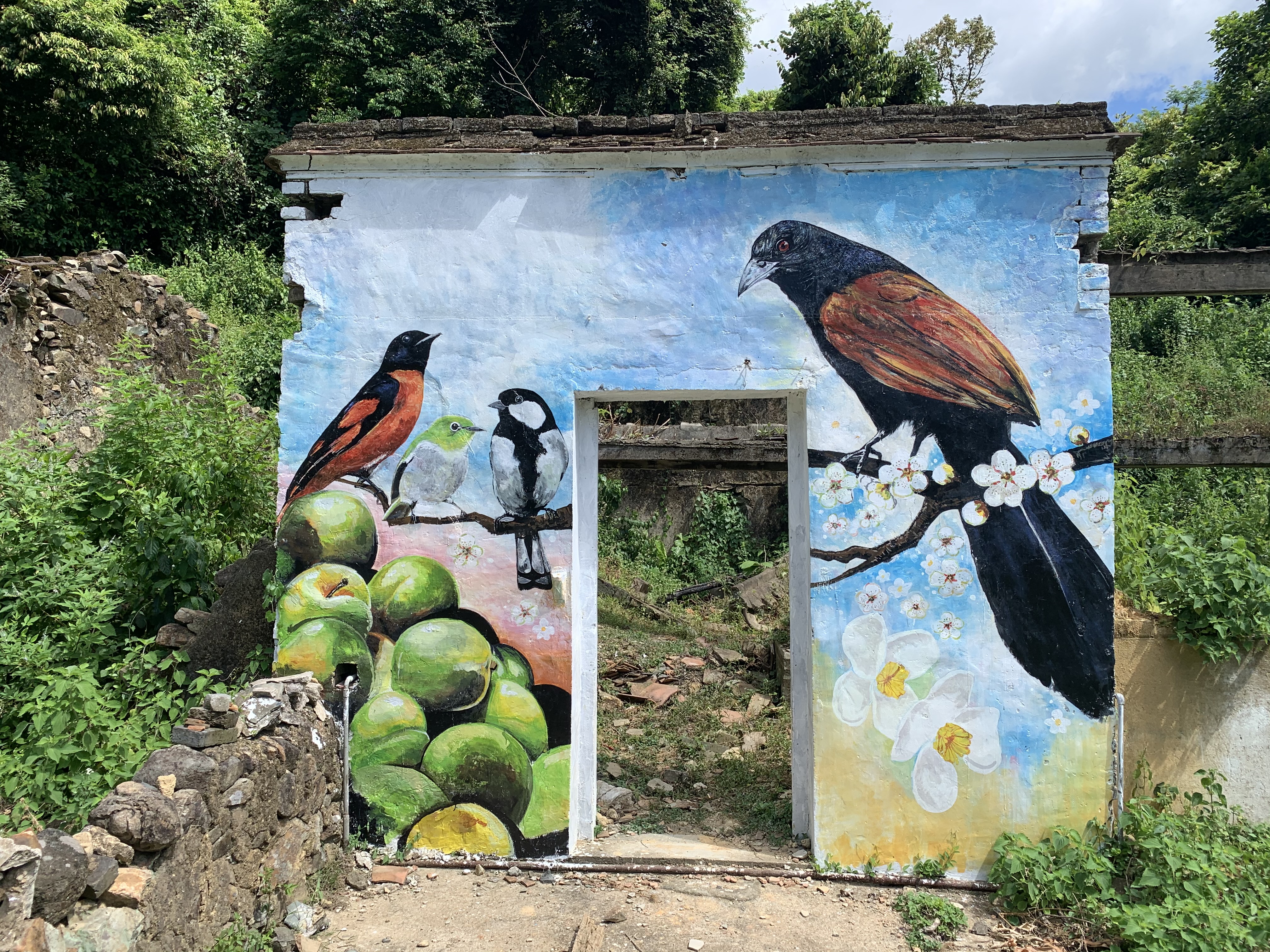Village Introduction

Kop Tong

Wall painting by Human Ip in Mui Tsz Lam
Mui Tsz Lam and Kop Tong
Landscape and Environment
Mui Tsz Lam and Kop Tong are two traditional Hakka villages located on the northern slope of Tiu Tang Lung hill in the northeastern part of New Territories of Hong Kong. Due to their remote location and inconvenient transportation, villagers have gradually moved out and Mui Tsz Lam and Kop Tong were left desolate. Fortunately, the natural environment and the historical buildings of Mui Tsz Lam and Kop Tong have been preserved.
Diverse Habitats
Both Mui Tsz Lam and Kop Tong are situated at the slope and the middle-lower reaches of the river.The unique geographical environment creates a humid setting, which is conducive to the cultivation of rice. In addition to terrace farmlands, there are also hillside Fengshui Forests and riparian ecosystems in the village nearby. This natural environment houses rich biological resources, and have also bred many rare species such as crab-eating mongoose (Herpestes urva), perpetual begonia (Begonia longifolia) and common birdwing (Troides helena), etc.
Traditional Farming Village Landscape
Both Mui Tsz Lam and Kop Tong villages are traditional Hakka communities. According to villagers, Mui Tsz Lam was established about 400 years ago by the Tsang’s clan, while Fan’s clan has settled in Kop Tong for over 300 years. Both villagers are members of the Hing Chun Yeuk Village Alliance.
The two villages demonstrate typical Fengshui-village settings which are often found in Southern China. Both villages are situated at a location supported by a back mountain with a Fengshui Forest safeguarded by villagers. They are also surrounded by a hilly terrain on both sides with a stream running through them. The villagers have carefully designed spatial configuration that vividly demonstrated the Hakka settlers’ wisdom of the most habitable location for living, while adapting to the specific geographic, topographic and local climate conditions.
The 1960s was the heyday of Mui Tsz Lam and Kop Tong with about one hundred inhabitants respectively. The villagers mainly planted rice and fruit trees such as plum and tangerine to make aliving. However, due to the inconvenient transportation and tough agricultural life, most villagers emigrated overseas for better livelihoods, leaving the villages abandoned.
New Community
Towards a Sustainable Rural Community
Although no one lives in Mui Tsz Lam nowadays, villagers have maintained electricity connection and sought to redevelop the old playground. The village also co-operated with various organisations to launch the first HSBC-HKU supported revitalisation project, “Nature, Earth and Human – Mui Tsz Lam Art Revitalization Project”. Art work such as murals were created,presenting the characteristics of Mui Tsz Lam in different ways and successfully attracted public attention to this remote village. It has also established “Mui Tsz Lam Story House” to promote Hakka culture and the village lifestyle to the public. This project is part of the “Co-creation of the Community” Scheme under the “HSBC Rural Sustainability” programme initiated by Policy for Sustainability Lab of the Centre for Civil Society and Governance at The University of Hong Kong.
For Kop Tong, one of the indigenous villagers returned to the village in the 2000s and stayed there since. After electricity was reconnected to the village, the villagers rebuilt the terraces in Kop Tong and renovated the housing.
The Forest Village Programme aims to revive the two villages with forests as the dominant and provisioning habitat, through restoration of farmlands, enhancement of habitats, and adaptive repurposing of village assets. The project aspires to revitalize and enhance the natural, cultural and landscape values of Mui Tsz Lam and Kop Tong.


